I’m not going to lie; the Lobster mushroom is a bizarre one. Although in the fungi world, what really counts as weird?! Some folks decline to eat these because of the way they grow – they’re not actual mushrooms but a parasitic fungi.
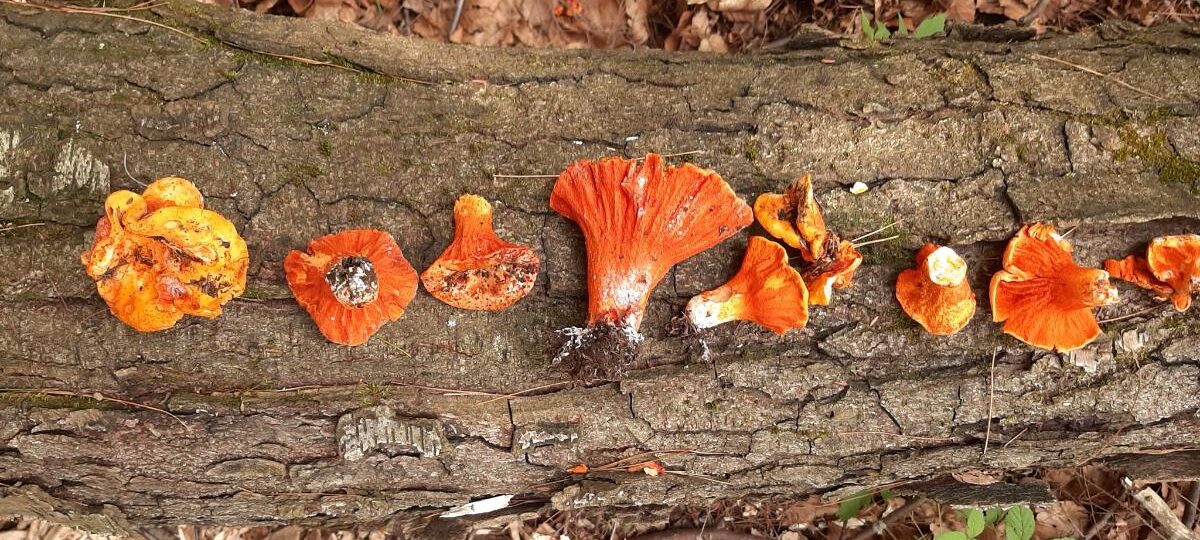
That’s sad for the naysayers, though, because Lobsters (Hypomyces lactifluorum) are some of the finest eating. As with any wild food, mushroom, or vegetable, the key is finding them in their prime.
Because they are commonly called Lobster mushrooms, I will continue that use term here. We’ve established they’re not true mushrooms, but common names are helpful even if they’re not scientifically correct.
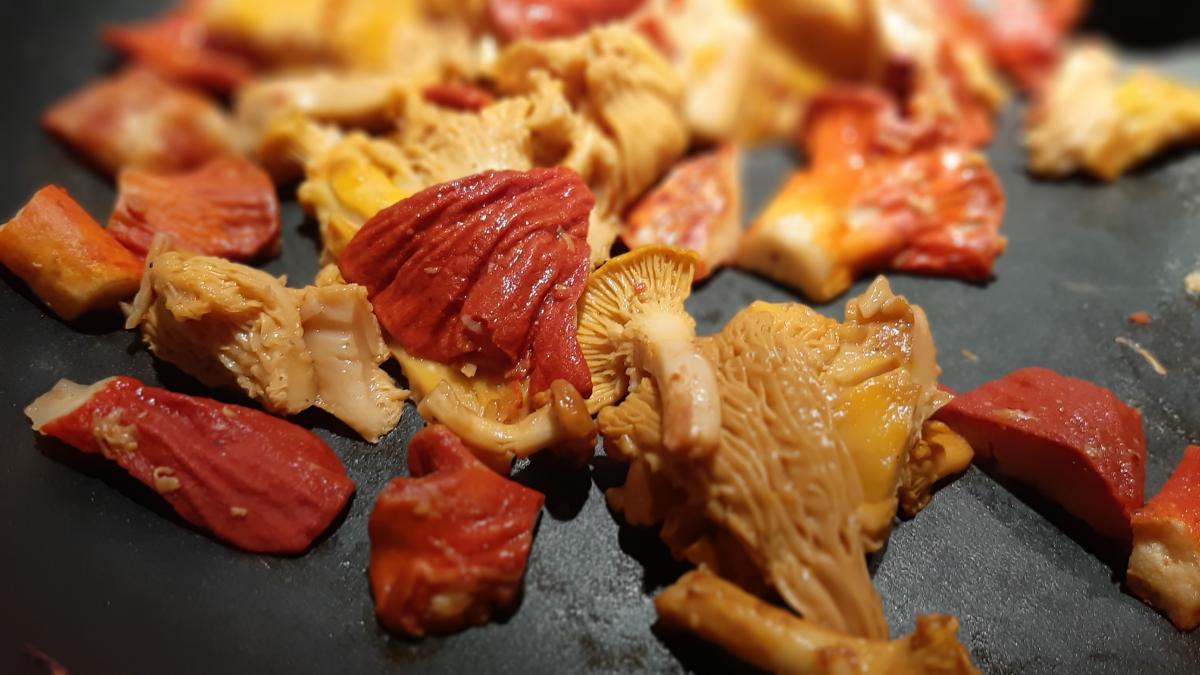
Lobsters are a delicious fungus, for sure. If you’ve been curious about these oddball fungi, read on and learn how to correctly identify, harvest, and prepare the Lobster of the woods.
Looking for recipes? Check out our in-depth guide: How to Prepare Lobster Mushrooms: Cleaning, Prepping, and Cooking Guide.
Jump to:
All About Lobster Mushrooms
Lobster fungi are parasitic ascomycete – a type of parasitic mushroom that creates spores through special sacs on their outer surface. This Hypomyces mold attacks a host species, physically changing the host through the parasitic process, and turns it into something else entirely. The parasitic Lobster fungus specifically attacks Russula (Russula sp.) and Milkcap (Lactarius sp.) species.
The transformation that occurs during the parasitic process is quite stunning. By the end of the process, the host is unidentifiable. Russula and Milkcap mushrooms have stems, discernible caps, and gills. They are rather quite common-looking mushrooms. When the Lobster parasite is done, the “new” mushroom is bright orange to reddish-purple and solid, with no stem, no clearly defined cap, and no gills.
The bright orange-red coloring resembles the outer shell of a cooked lobster crustacean. Some people say Lobster mushrooms even taste like their namesake, or at least have a seafood-esque flavor. When cooked with salt and butter, the flavor resemblance is definitely there.
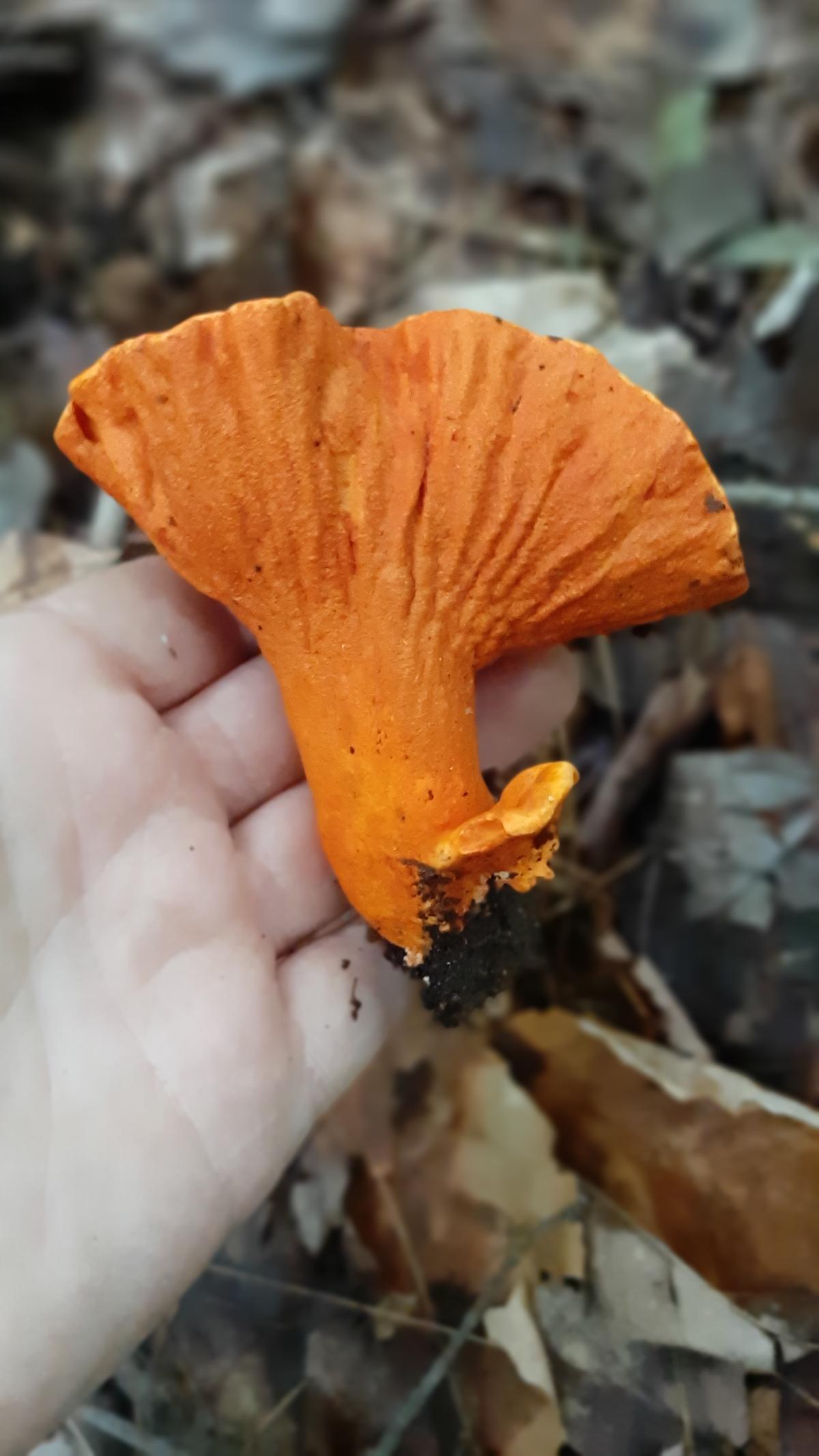
The taste resemblance is potentially related to how we eat with our eyes first, and these mushrooms sure look like shellfish. However, several fungi species, including Lion’s Mane, have a very familiar underlying seafood-like flavor. So, it’s not inconceivable that this Lobster tastes like the other Lobster.
Lobster mushroom flesh is bright white, crisp to brittle, and very dense. This is part of why it is so beloved by foragers – it’s a hearty mushroom that holds up during the cooking process.
One of the really fascinating things about this Hypomyces Lobster fungus is that it never parasitizes an entire patch of its host. It is selective and leaves some fruiting bodies behind so the host can continue to multiply. As Tom Volk suggests, are we witnessing a fungus practicing sustainable agriculture?
Where Do Lobster Mushrooms Grow?
The exact range of Lobster mushrooms isn’t really documented. They grow pretty abundantly in the Pacific Northwest, the northern US States, and Canada. They also grow in northern Europe and Russia. The species in Europe may be separate from the North American one. This still needs to be studied and clarified.
From their growth range, it seems the parasite prefers northern climates.
How To Find Lobster Mushrooms
Season
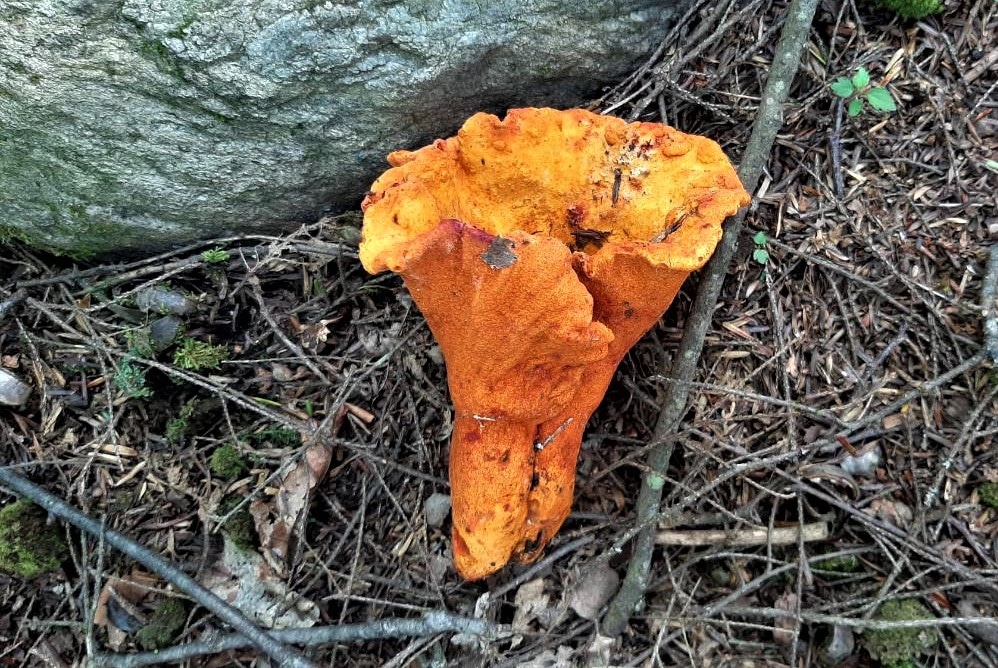
Lobster mushroom foraging season is hard to predict, but if you know where to look, you just need to keep your eyes peeled for their ridiculously bright orange-red caps. Lobsters usually appear in fall, but they can be found anytime (except winter).
They emerge after a good soaking rainfall, like most other mycorrhizal fungi. Usually, they’ll appear 4-7 days after a good rain in the fall – that is the best time to look.
Description
Lobster mushrooms are short, stout, and bright orange-red that turns purplish as they age. Their body is compact and singular – there is no separation of cap, gills, stem, or base. The top cap portion is usually semi-cup-shaped or concave and wavy at the edges. Caps are prone to collecting debris and dirt, which is annoying but common.
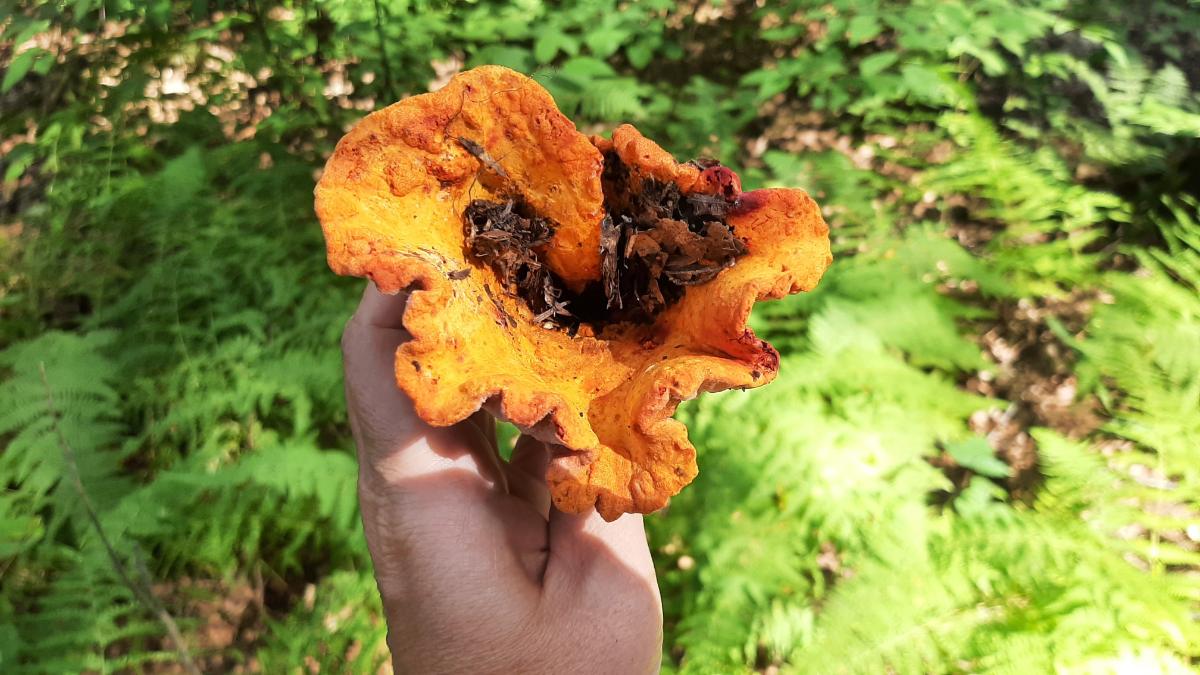
The mushroom usually grows 4-8″ tall, mimicking the size of its host. But they can get large, too. Massive Lobster mushrooms are not unheard of, especially in the Pacific Northwest.
Lobster mushrooms grow very irregularly – probably the result of the parasitization process. They look deformed and stunted. The outer flesh is covered in tiny pimples, with subtle lines or blunt ridges around the edges where the host’s gills once were. The surface is actually somewhat hard, not squishy or spongy like most other mushrooms. This is another way they resemble their namesake.
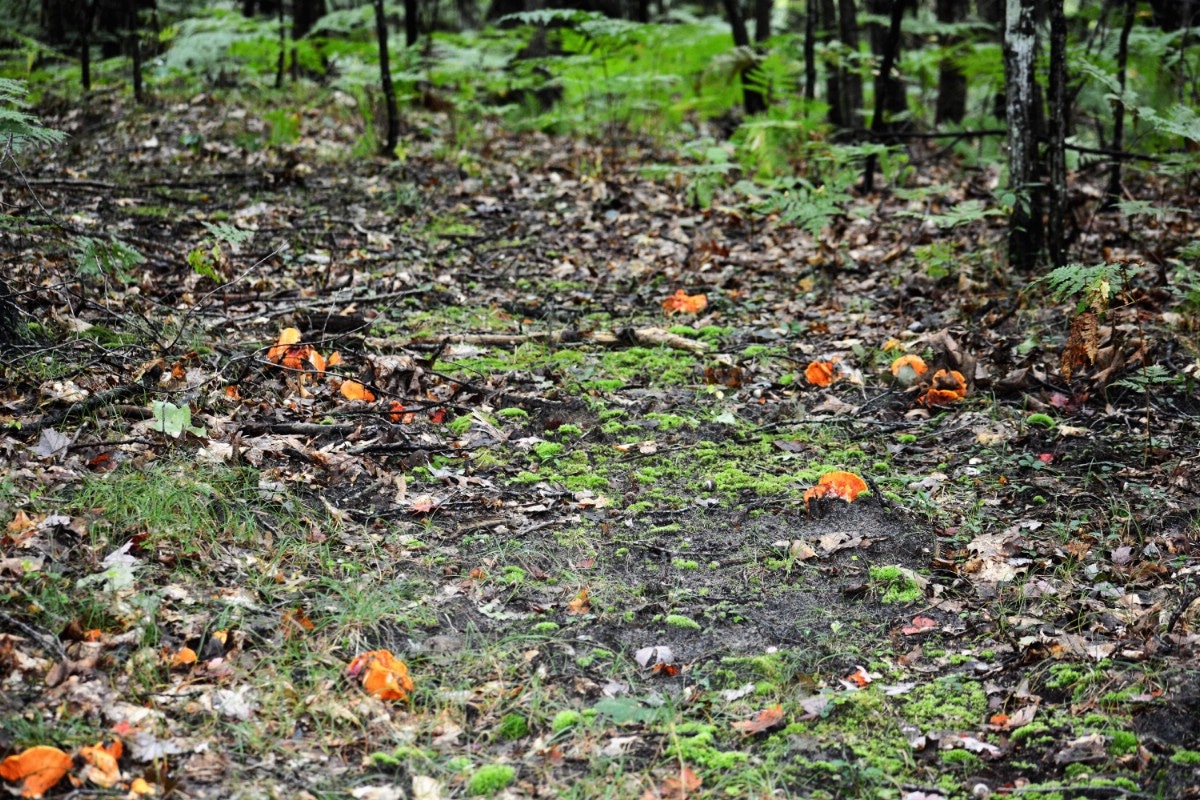
They grow singularly or in scattered groupings, much like their hosts. It’s not uncommon to see partially parasitized Lobster mushrooms that are light orange to red with white blotches or patches. This is a parasitization in process.
The patches often look like someone tried to scrub the red off with a wire brush. If you leave the fungi there, they will continue their transformation. However, they are also acceptable to harvest.
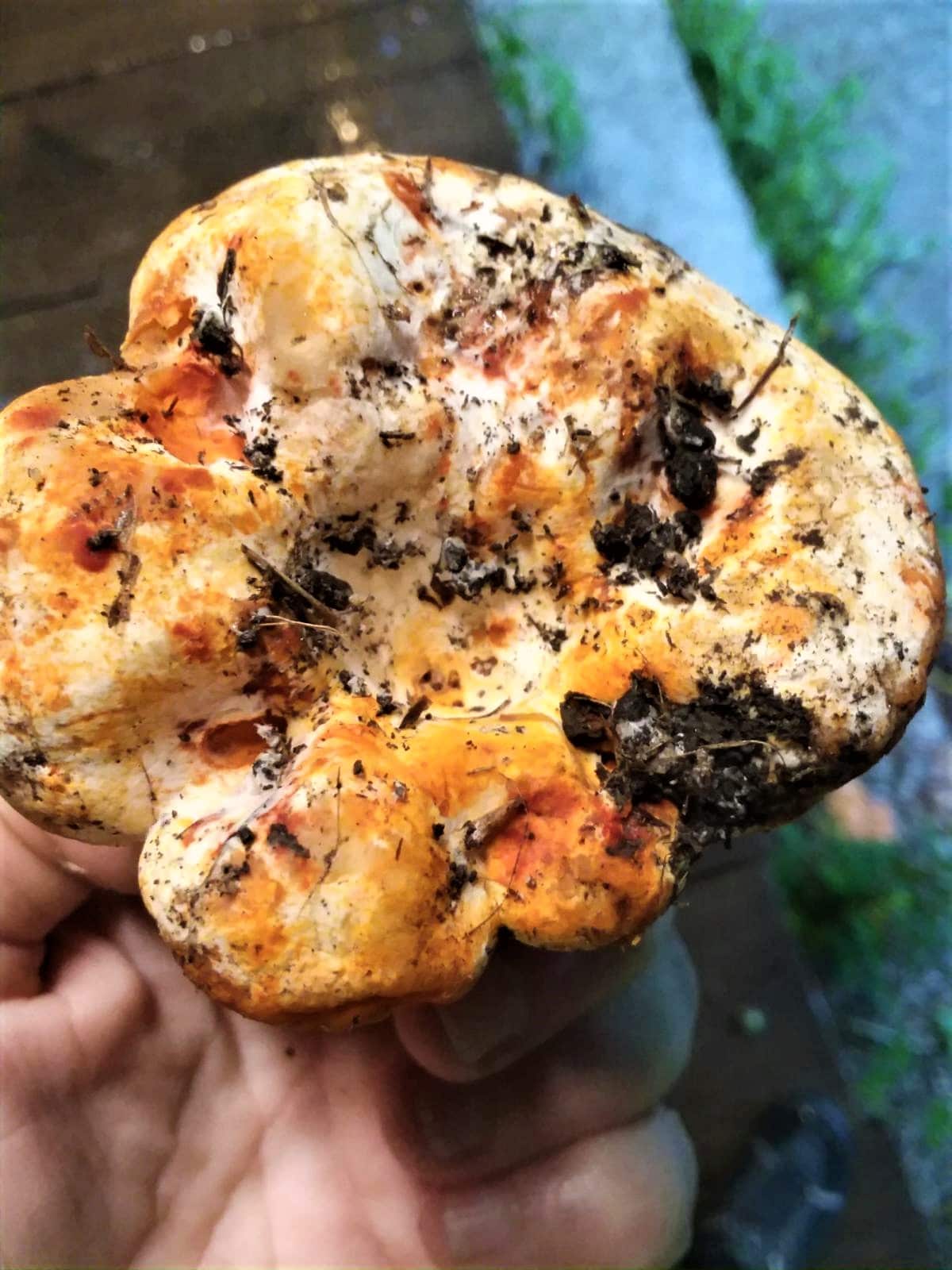
As they age, the mushrooms rot and turn dark purple to brown and may develop an off-white mold on top. Any specimens with white mold or brown sections should be left in the ground.
You may find lobster specimens with a white powder on them; this is spore residue and is okay – just brush it off. Preferably, brush it off near some Russulas or Milkcaps so they will get infected and turn into lobsters too.
Habitat
Because they are parasites, Lobster mushrooms will appear where Russula and Milkcap species grow. This is a vast and diverse habitat. They often grow among conifers, especially hemlock, where Lactarius and preferred Russula species are more common.
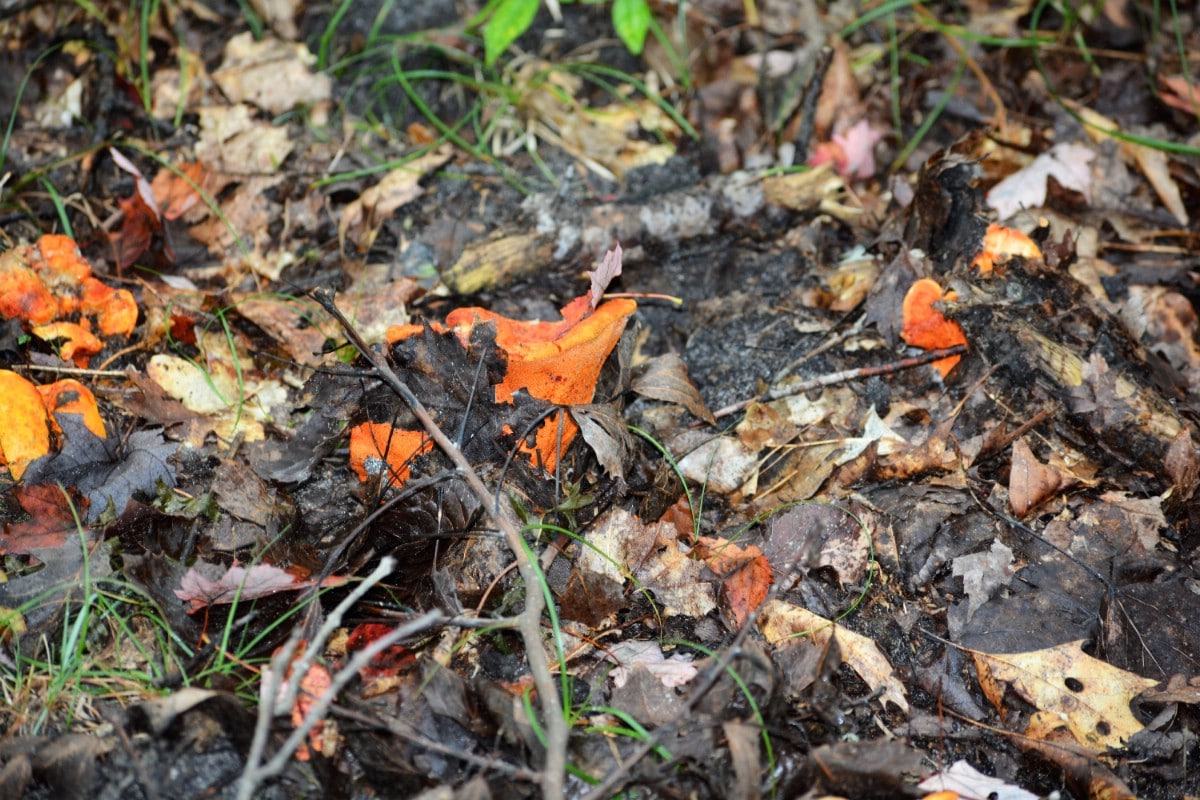
Lobster mushrooms seem to prefer parasitizing Lactarius piperatus, the peppery milkcap. The peppery milkcap is edible on its own but super spicy, a feature that disappears after the lobster fungus takes over. Looking in places where L. piperatus grows is always an excellent first step.
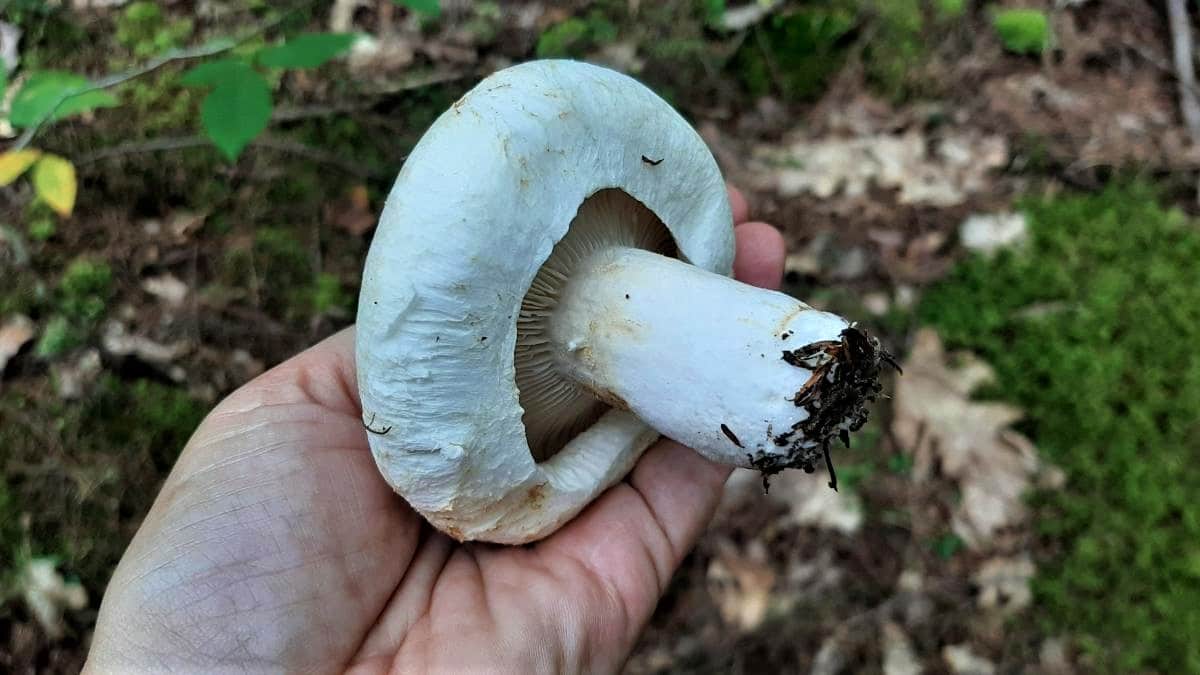
Another popular mushroom the lobster fungus attacks are Russula brevipes, the Short-Stemmed Russula. This Russula is white, broad, stout, and grows with conifers. It is edible but not all that tasty. The lobster parasitization significantly improves this mushroom, for sure.
Lobsters grow on the forest floor, never on trees, logs, or wood. They don’t get very tall. In fact, they’re frequently smaller than the original host and often don’t fully emerge from the forest floor.
It’s easy to miss Lobster mushrooms, even though they’re so bright. They get concealed beneath moss, leaf, and plant litter, and you’ll just see the slightest glimpse of red.
On The Lookout
Foraging lobster mushrooms is very hit or miss. In addition to having a wide seasonality, they also deteriorate quickly, making it difficult to find good specimens. Be patient. They aren’t rare or uncommon, but it does take a bit of luck and perseverance.
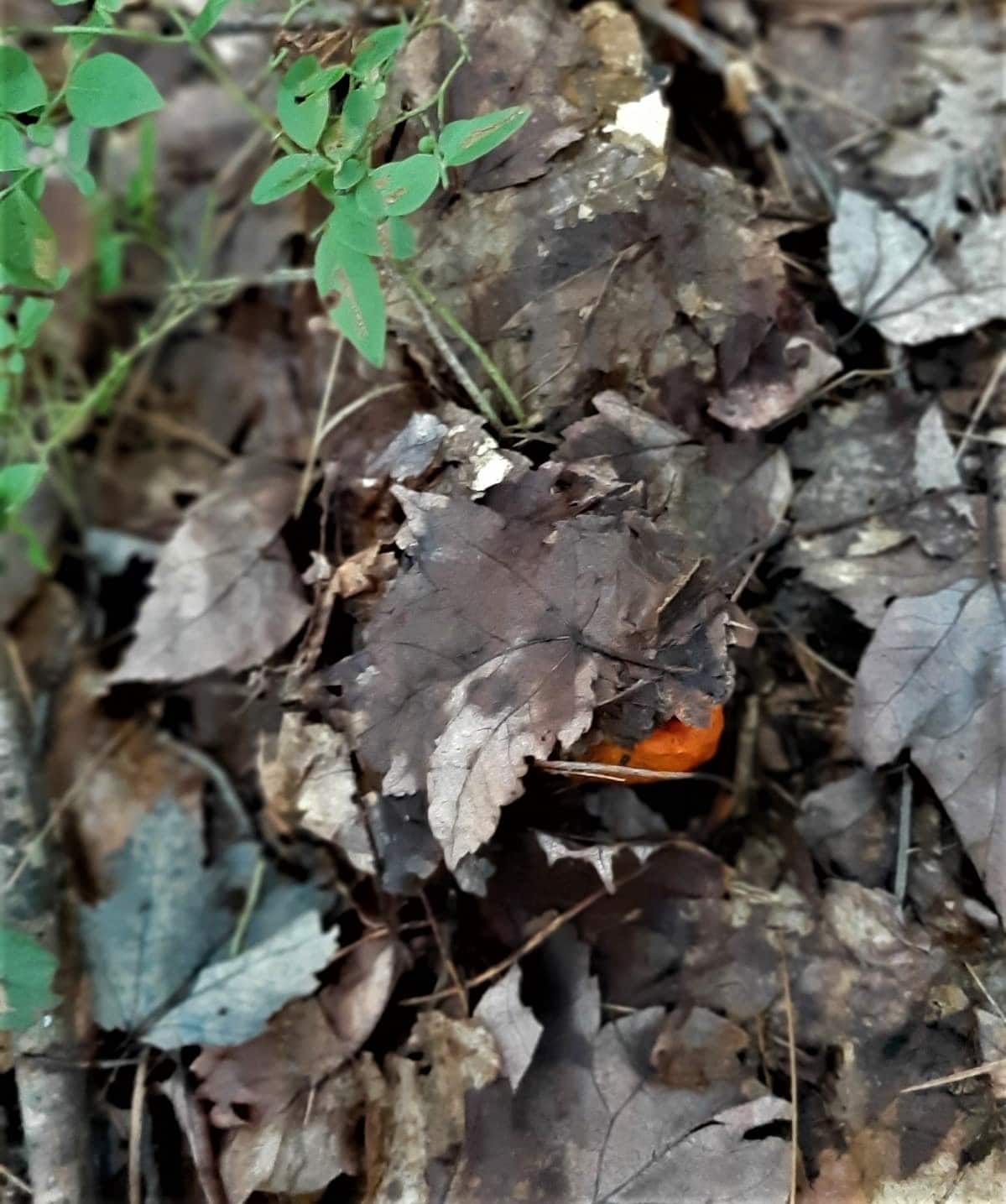
As you walk through the forest, keep your eyes on the ground for an orange-red lobster-looking object. A good approach is to identify spots where Lactarius and Russulas grow and watch those patches.
If you find by-gone lobster mushrooms, don’t despair. Mark the spot to check later in the season and for years to come. The parasitic fungus often spreads to infect more hosts in the same location the following year.
Lobster Mushroom Lookalikes
Lobster mushrooms are sometimes confused with Chanterelles, but only because they are both short, stout, and brightly colored. On closer inspection, you can see chanterelles have false gills, and lobsters have no type of gills.
How To Harvest Lobster Mushrooms
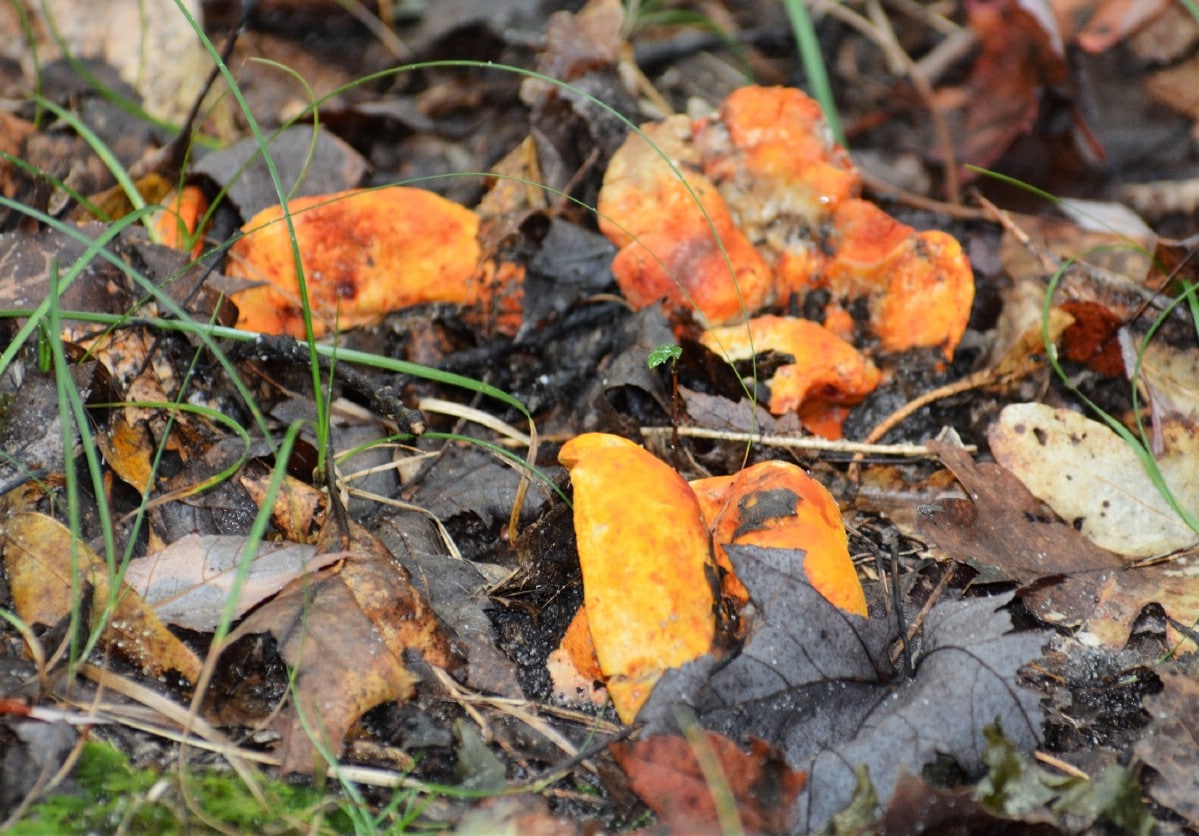
Gently pull the mushroom out of the ground. In most cases, they easily detach from the base, practically falling into your hand. Keep an eye out for slugs and snails – they love these mushrooms as much as we do. Deer and other wildlife like to snack on them too, and there might be some obvious nibbling.
Only harvest young firm lobster mushrooms. This cannot be stressed enough. These mushrooms deteriorate quickly, and any that are mushy, brown, or bug-ridden will not be enjoyable. Partially decomposed lobsters may cause digestive distress and other bad reactions.
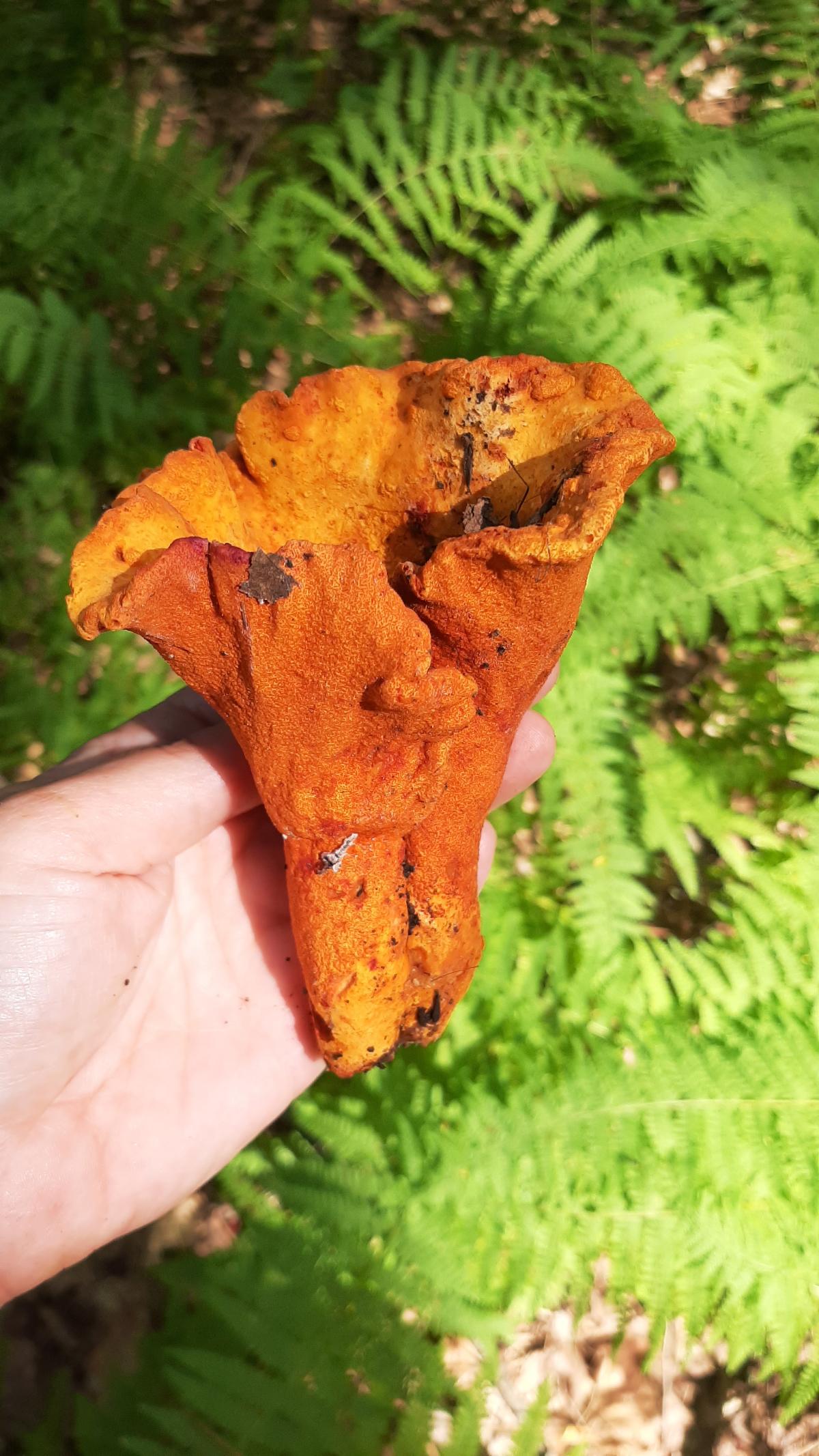
The entire mushroom should be brightly-colored and dense with few to no cracks. Use the lobster mushrooms soon after harvesting. They do not keep well. Usually, 3-4 days is the max, in the refrigerator in a paper bag so they can breathe.
How To Prepare Lobster Mushrooms
Cleaning Lobster mushrooms can be frustrating, depending on the specimen’s shape. Lobsters with convoluted growth often gather dirt, pine needles, or leaves between their crevices that are difficult to remove. In most cases, you have to cut off that bit because it isn’t worth the effort of cleaning.
Use a small brush (a toothbrush works great) to gently remove any remaining dirt or debris on the cap. Wiping them with a damp paper towel also works well.
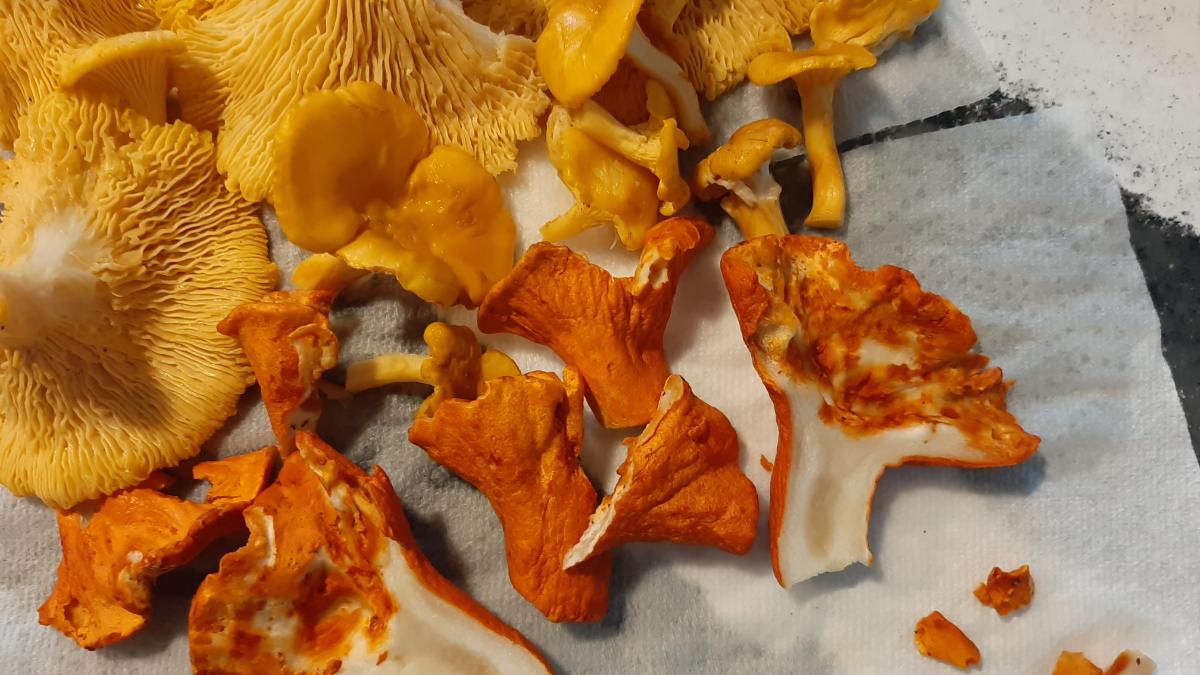
Lobster mushroom flesh may be brittle and fall apart readily – this is because they are on their way out. Prime specimens are dense and easily keep their shape. They don’t get overcooked very easily and retain their meaty texture.
Their flavor isn’t very strong; it is slightly seafood-like and mushroomy. As they cook, the seafood aroma intensifies. They taste best when cooked with lots of fat and heat. Their intense coloring transfers to whatever you’re cooking – this is an excellent feature for risottos and stews.
Cut the mushrooms in half before using them to ensure the flesh is solid and white. This is also a great way to remove little critters. If any of the flesh is brown, toss the entire mushroom.
Looking for recipe ideas? Check out our in-depth guide: How to Prepare Lobster Mushrooms: Cleaning, Prepping, and Cooking Guide.
Some Ideas For Preparing Lobster Mushrooms:
- Saute with butter and a little garlic for 10-12 minutes.
- BBQ
- Tempura fried
- Seafood chowder
- Potpie
- Added to risotto
- Lobster pickles
- Pizza topping
- Dried
- Lobster cakes (like crab cakes, but Lobster)
- Lobster bisque
- Mushroom stock
- Sauces
- Lobster macaroni & cheese
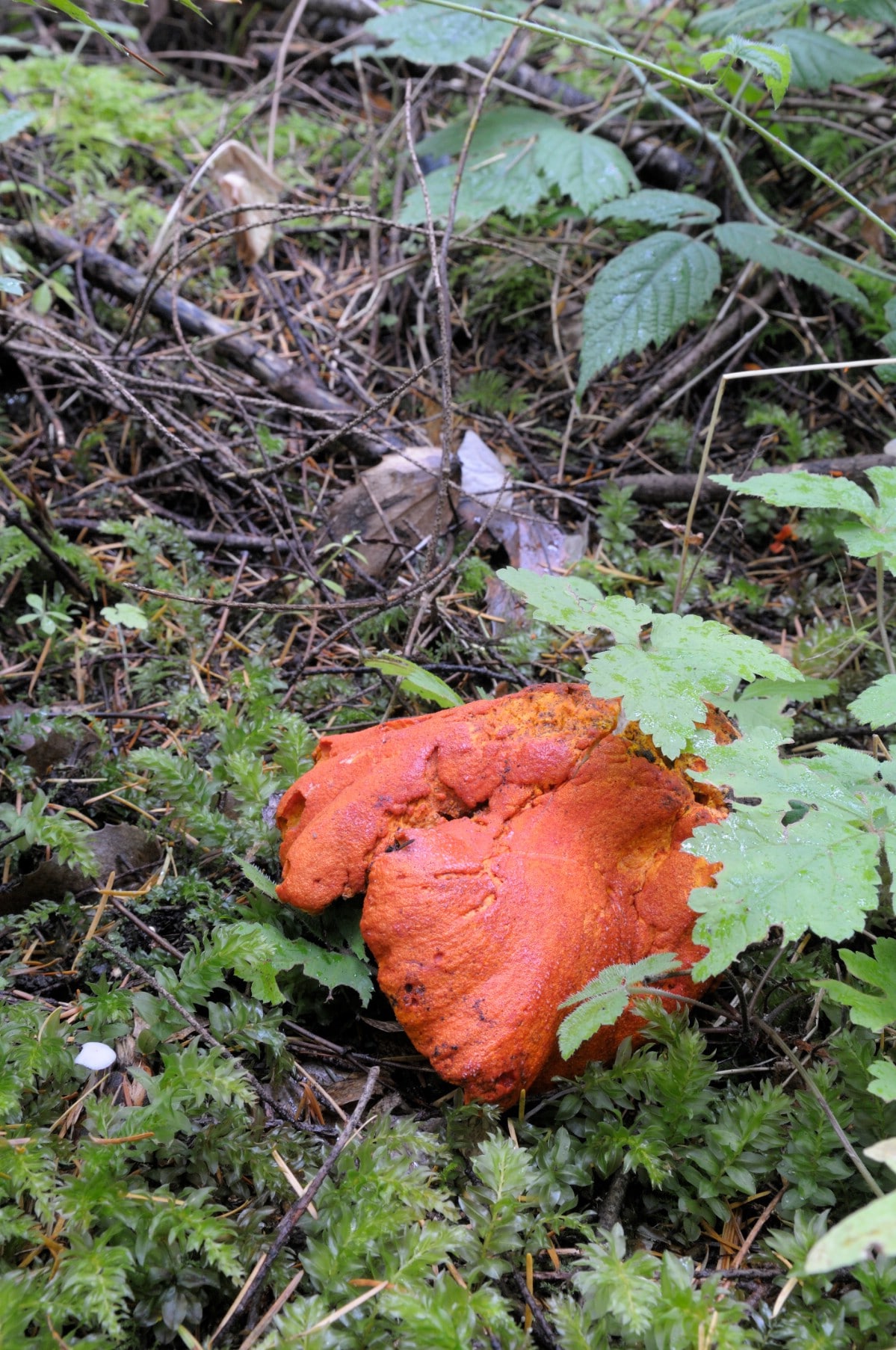
Parasitic Species: Potential for Toxicity and Allergic Reaction
Some sources suggest that the parasitic Lobster might take over poisonous mushrooms as hosts and become toxic themselves. This seems to be is a hypothetical warning and not actuality.
There is no evidence this parasite uses poisonous hosts at all. And, after hundreds of years of foraging and eating, it makes sense someone would document that if it were true. If you have any concerns, it’s best not to forage any Lobster mushroom unless you know the host species.
However, figuring out the host can be pretty tricky. If the mushroom is entirely parasitized, there is no way of telling what the original species was. Potentially, you can look around to see what other mushrooms are growing nearby and make a reasonable conclusion.
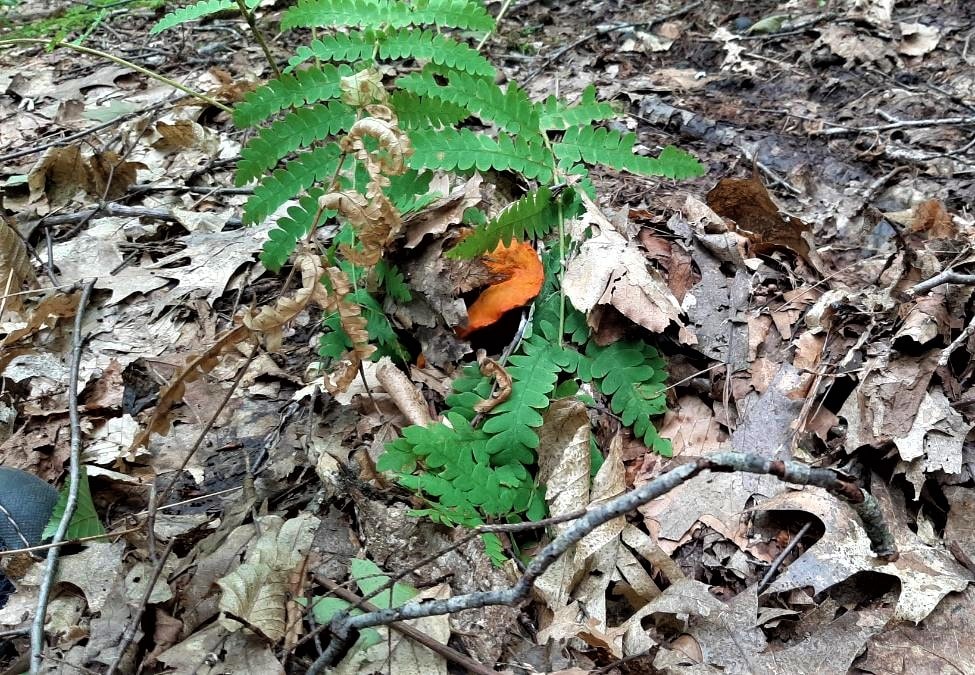
This all being said, many people worldwide eat Lobster mushrooms without any idea of the host and are fine, this forager included. There are no known cases of toxic poisoning from a parasitized poisonous host or even evidence that they attack poisonous species.
In fact, a recent study done by biologists at the University of Quebec documented that the infected mushroom contained only trace amounts of the host. The DNA of the mushroom was almost entirely of the parasitic Hypomyces fungus. During the infection, the parasite actually converts chemicals into more flavorful compounds. Thank you, fungi parasite!
Besides the toxic host species issue, there is a potential for allergic reaction, just as with any other mushroom. Some folks are allergic to Chicken of the woods or Lion’s mane, while others eat them with no problem. The same is true with the Lobster mushroom. As with any new food, it’s best to eat just a little at first to see how you react. In the mushroom fungi world, this is just good practice.
There is anecdotal evidence that people with shellfish or fish allergies may be more prone to having an allergic reaction to lobster mushrooms.
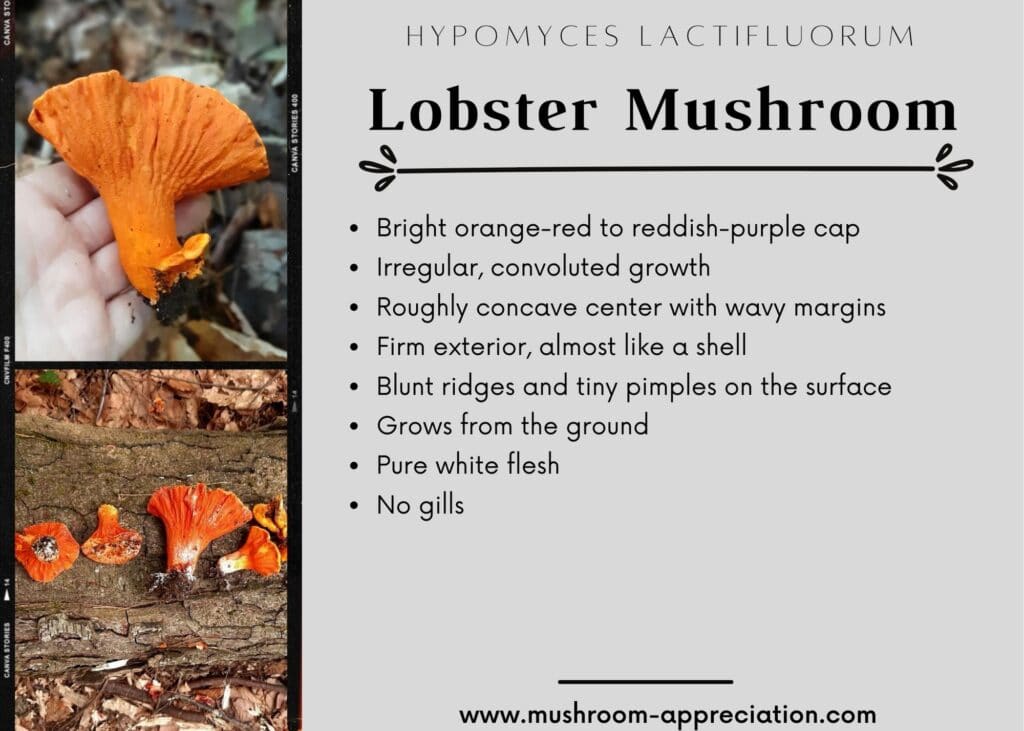
Interested in other edible mushroom species?
Check out our guides to chanterelles, morels, oysters, and lion’s mane.
Lobster Mushroom Common Questions
Are Lobster mushrooms safe to eat?
Yes! People have been eating Lobster mushrooms for centuries. Some people might have an allergic reaction, as is possible with any food. Always eat a small portion first. See the above section on toxicity for a longer explanation.
Do Lobster mushrooms really taste like Lobster?
Yes, a little bit. While the taste isn’t exactly like a lobster, there is some resemblance. Don’t expect them to be an exact flavor replica, though. Cooked lobster mushrooms do have a definite yet mild seafood aroma.
Can I grow Lobster mushrooms?
Not exactly. There are no grow kits or commercial cultivation of the species. Besides being a parasite that attacks specific host mushrooms, Lobsters also create mycorrhizal relationships with trees. This is a difficult thing to replicate at home, if not impossible.
However, you can encourage the parasitic Lobster to infect patches of Russulas and Milkcaps. Try breaking up old non-edible Lobster mushrooms and spreading them around a patch of Russulas. There are no studies that say whether this is effective or not, but it’s worth a try!
Do Lobster mushrooms have any poisonous lookalikes?
No. In fact, they have no lookalikes at all. Lobsters are a one-of-a-kind fungi and culinary delight. Of course, if you ever have any doubts about what you’ve found, ask an expert.
Where can I buy Lobster mushrooms?
Most likely, you can’t buy fresh Lobsters unless you live in one of the places they grow and find them at a farmer’s market or specialty store. Lobster mushrooms don’t store or transport well, and their shelf life is very limited. That, combined with their unpredictable seasonality and growth, makes them a hard mushroom to buy fresh.
But, Lobster mushrooms dry and reconstitute very well, so you can find dried Lobster mushrooms. They tend to be very pricey.






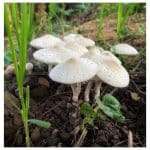
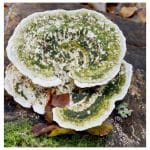
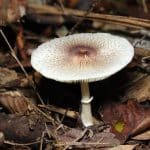
Leave a Reply